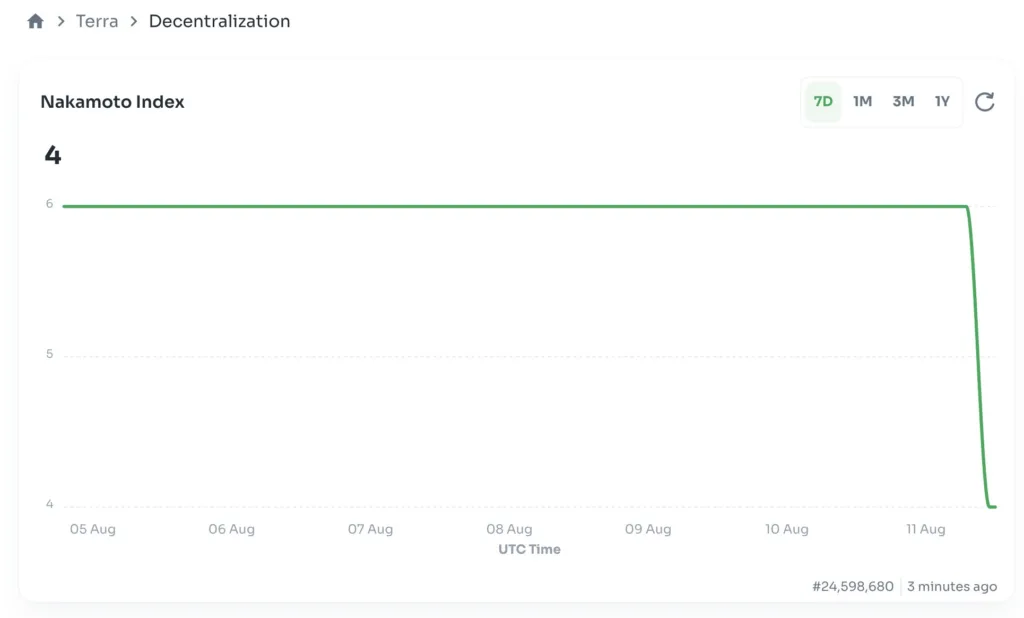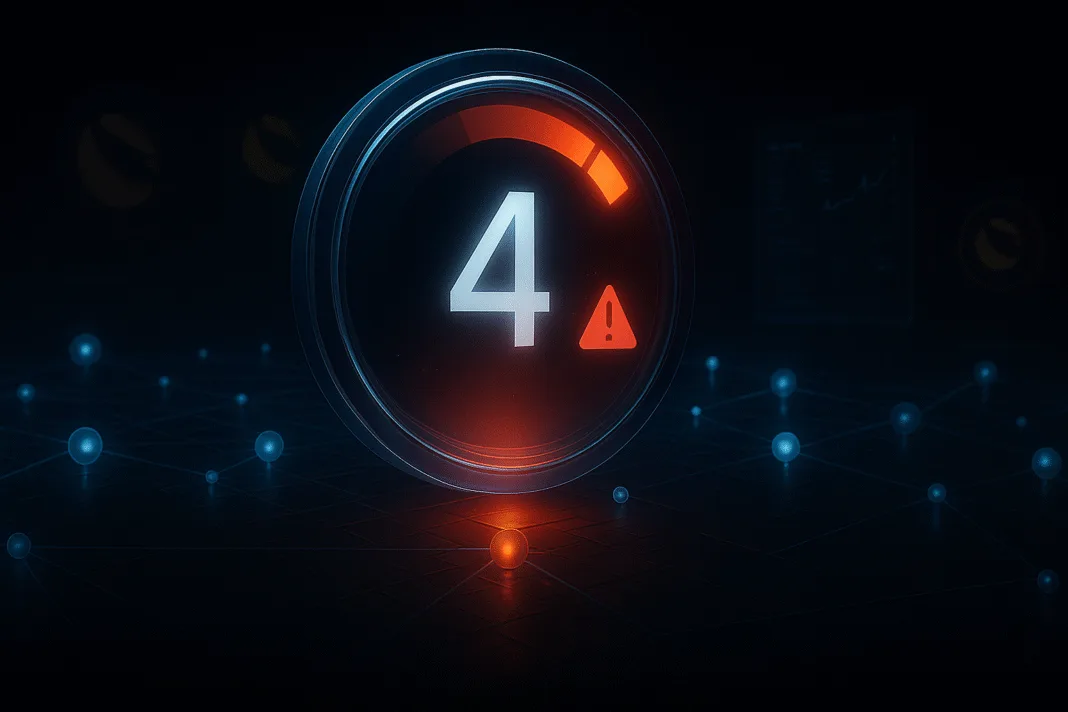The Terra Classic chain’s Nakamoto Index has plummeted from 6 to 4, raising alarms about its decentralization. The Nakamoto Index measures the minimum number of validators controlling over one-third of a blockchain’s voting power. A lower index indicates greater centralization, undermining the network’s security and autonomy.
This decline follows a massive 99 billion $LUNC stake to the AutoStake validator, boosting the top four validators’ voting power to over 33.33%. With $LUNC’s total supply at approximately 6.5 trillion units, a 100 billion unit holding can significantly sway the chain’s governance. This concentration of power questions the true distribution and effective supply of $LUNC, as large stakes can disproportionately influence decisions.

Decentralization remains the cornerstone of blockchain integrity, and Terra Classic aims to enhance it through the Dyncomm system. However, the system has failed to improve the Nakamoto Index, suggesting inefficiencies or structural flaws. A centralized network risks manipulation, reduced trust, and vulnerability to attacks, which could deter investors and users.
To address this, Terra Classic must prioritize strategies to distribute voting power more evenly, such as incentivizing smaller validators or capping individual validator stakes. Community-driven governance reforms could also restore balance and align with the chain’s decentralization goals.
As Terra Classic navigates these challenges, stakeholders must act swiftly to bolster network resilience. A higher Nakamoto Index would reflect a healthier, more decentralized ecosystem, fostering trust and long-term sustainability for $LUNC holders and the broader crypto community.

